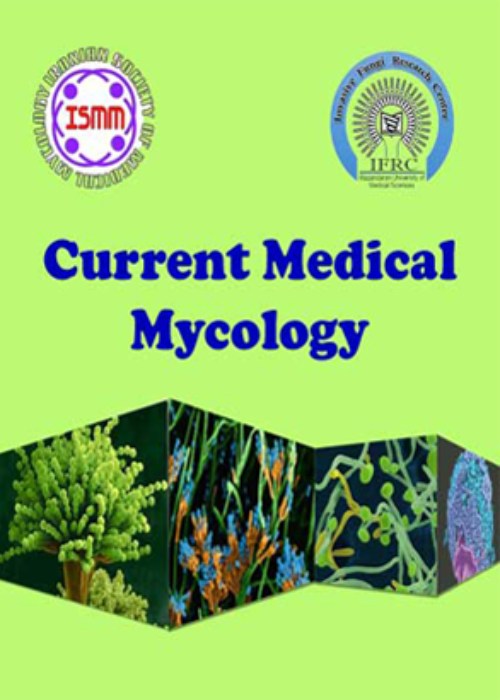Indoor damp surfaces harbor molds with clinical significance
Author(s):
Article Type:
Research/Original Article (دارای رتبه معتبر)
Abstract:
Background and Purpose:
Fungal contamination in damp places in buildings has become an increasing problem worldwide. Dampness facilitates the growth of fungi, which can cause adverse effects not only on the buildings but also on their occupants. The aim of this study was to identify indoor mold species in the buildings of Kerman province, Iran.
Materials and Methods
In this study, 110 samples were obtained from surfaces of damp indoor areas in buildings randomly selected in Kerman province. The identification of fungal species was based on the macroscopic and microscopic characteristics of the isolates, such as colony morphology, hyphae, conidia, and conidiophores, as well as molecular sequence data.
Results
Based on the results, a total of 218 fungal isolates were obtained. Apart from frequently isolated fungi, such as Alternaria, Aspergillus, and Penicillium, 13 species, including Cladosporium sphaerospermum, Cladosporium herbarum, Cladosporium halotolerans, Engyodontium album, Collariella bostrychodes, Stachybotrys xigazenensis, Ramularia eucalypti, Fusarium merismoides, Fusarium solani, Ochroconis musae, Mucor racemosus, Acremonium zonatum, and Acremonium persicinum were identified, and the selected species were described. Among these 13 species, Cladosporium was the most common species (43%) in indoor surfaces, followed by Ochroconis musae (10.8%) and Engyodontium album (7.4%). To the best of our knowledge, Stachybotrys xigazenensis was reported in the present study for the first time in Iran. In addition, E. album and O. musae were isolated for the first time from indoor surfaces in Iran.
Conclusion
According to the results, the level of overall fungal richness across indoor surfaces was high. Some of the isolated taxa were clinically significant. It was concluded that the damp residential surfaces were potentially passive collectors of clinically significant molds.Keywords:
Language:
English
Published:
Current Medical Mycology, Volume:4 Issue: 3, Sep 2018
Pages:
1 to 9
https://magiran.com/p1909495
دانلود و مطالعه متن این مقاله با یکی از روشهای زیر امکان پذیر است:
اشتراک شخصی
با عضویت و پرداخت آنلاین حق اشتراک یکساله به مبلغ 1,390,000ريال میتوانید 70 عنوان مطلب دانلود کنید!
اشتراک سازمانی
به کتابخانه دانشگاه یا محل کار خود پیشنهاد کنید تا اشتراک سازمانی این پایگاه را برای دسترسی نامحدود همه کاربران به متن مطالب تهیه نمایند!
توجه!
- حق عضویت دریافتی صرف حمایت از نشریات عضو و نگهداری، تکمیل و توسعه مگیران میشود.
- پرداخت حق اشتراک و دانلود مقالات اجازه بازنشر آن در سایر رسانههای چاپی و دیجیتال را به کاربر نمیدهد.
In order to view content subscription is required
Personal subscription
Subscribe magiran.com for 70 € euros via PayPal and download 70 articles during a year.
Organization subscription
Please contact us to subscribe your university or library for unlimited access!


